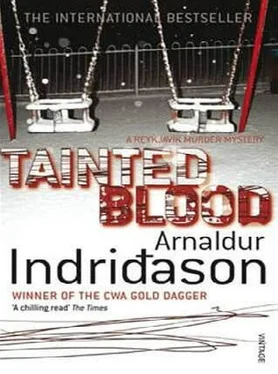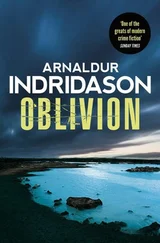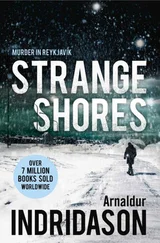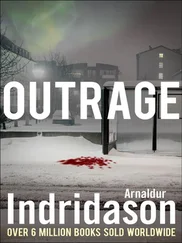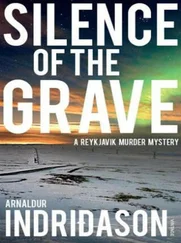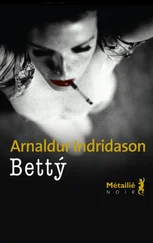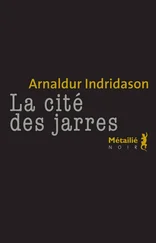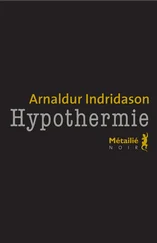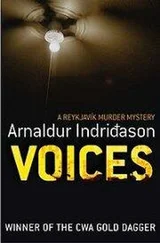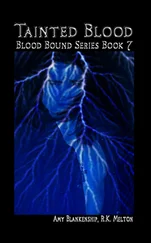Arnaldur Indridason - Tainted Blood
Здесь есть возможность читать онлайн «Arnaldur Indridason - Tainted Blood» весь текст электронной книги совершенно бесплатно (целиком полную версию без сокращений). В некоторых случаях можно слушать аудио, скачать через торрент в формате fb2 и присутствует краткое содержание. Год выпуска: 0101, ISBN: 0101, Издательство: Random House Publishing Group, Жанр: Полицейский детектив, на английском языке. Описание произведения, (предисловие) а так же отзывы посетителей доступны на портале библиотеки ЛибКат.
- Название:Tainted Blood
- Автор:
- Издательство:Random House Publishing Group
- Жанр:
- Год:0101
- ISBN:9781409078401
- Рейтинг книги:4 / 5. Голосов: 1
-
Избранное:Добавить в избранное
- Отзывы:
-
Ваша оценка:
- 80
- 1
- 2
- 3
- 4
- 5
Tainted Blood: краткое содержание, описание и аннотация
Предлагаем к чтению аннотацию, описание, краткое содержание или предисловие (зависит от того, что написал сам автор книги «Tainted Blood»). Если вы не нашли необходимую информацию о книге — напишите в комментариях, мы постараемся отыскать её.
Tainted Blood — читать онлайн бесплатно полную книгу (весь текст) целиком
Ниже представлен текст книги, разбитый по страницам. Система сохранения места последней прочитанной страницы, позволяет с удобством читать онлайн бесплатно книгу «Tainted Blood», без необходимости каждый раз заново искать на чём Вы остановились. Поставьте закладку, и сможете в любой момент перейти на страницу, на которой закончили чтение.
Интервал:
Закладка:
Arnaldur Indridason
Tainted Blood
A NOTE ON ICELANDIC NAMES
Icelanders always address each other using first names, since most people have a patronymic rather than a "proper surname", ending in — son for a son and — dottir for a daughter. People are listed by first names even in the telephone directory. Strange as it may sound to the English ear, first names are therefore used throughout the police hierarchy and when police and criminals address one another. Erlendur's full name is Erlendur Sveinsson, and his daughter is Eva Lind Erlendsdottir. Matronymics are rare, although Audur is specifically said to be Kolbrunardottir, "Kolbrun's daughter". Some families do have traditional surnames, however, either derived directly from or else modelled on Danish, as a result of the colonial rule which lasted until early in the twentieth century. Briem is one of these traditional surnames, and as such it does not reveal the gender of the bearer — in the case of Marion Briem the ambiguous first name compounds this secondary mystery.
REYKJAVIK
2001
1
The words were written in pencil on a piece of paper placed on top of the body. Three words, incomprehensible to Erlendur.
It was the body of a man of about 70. He was lying on the floor on his right side, against the sofa in a small sitting room, wearing a blue shirt and fawn corduroy trousers. He wore slippers on his feet. His hair was starting to thin, almost completely grey. It was stained with blood from a large wound on his head. On the floor not far from the body was a big glass ashtray with sharp corners. It too was covered in blood. The coffee table had been overturned.
This was a basement flat in a two-storey house in Nordurmyri. It stood in a small garden enclosed on three sides by a stone wall. The trees had shed their leaves, which carpeted the garden and covered the ground, and the knotty branches stretched up towards the darkness of the sky. Along a gravel drive which led to the garage, Reykjavik CID were arriving at the scene. The District Medical Officer was expected, he would sign the death certificate. The body had been reported found about 15 minutes earlier. Erlendur, Detective Inspector with the Reykjavik police, was one of the first on the scene. He expected his colleague Sigurdur Oli any minute.
The October dusk spread over the city and the rain slapped around in the autumn wind. Someone had switched on a lamp which stood on a table in the sitting room and cast a gloomy light on the surroundings. In other respects nothing at the scene had been touched. The forensics team were setting up powerful fluorescent lights on a tripod to illuminate the flat. Erlendur noticed a bookcase and a worn suite of furniture, the overturned coffee table, an old desk in one corner, a carpet on the floor, blood on the carpet. The sitting room opened into the kitchen and another door led from it to the den and on to a small corridor where there were two rooms and a toilet.
The police had been notified by the upstairs neighbour. He had come home that afternoon after collecting his two boys from school and it struck him as strange to see the basement door wide open. He could see inside his neighbour's flat and called out to discover whether he was in. There was no answer. He peered inside the flat and called his name again, but there was no response. They'd been living on the upper floor for several years but did not know the old man in the basement well. The elder son, 9 years old, was not as cautious as his father and quick as a flash he was in the neighbour's sitting room. A moment later the child came back and said there was a dead man in the flat, and he really didn't seem too perturbed by it.
"You watch too many movies," the boy's father said and cautiously made his way into the flat where he saw his neighbour lying dead on the sitting-room floor.
Erlendur knew the dead man's name. It was on the doorbell. But to avoid the risk of making an idiot of himself he put on some thin rubber gloves and fished the man's wallet out of a jacket hanging on a peg by the front doorway and found a payment card with a photograph on it. The man's name was Holberg, 69 years old. Dead in his home. Presumed murdered.
Erlendur walked around the flat and pondered the simplest questions. That was his job: investigating the obvious. Forensics handled the mysterious. He could see no signs of a break-in, neither on the windows nor the doors. On first impression the man seemed to have let his assailant into the flat himself. The upstairs neighbours had left footprints all over the front hallway and sitting-room carpet when they came in out of the rain and the attacker must have done the same. Unless he took off his shoes by the front door. It looked to Erlendur as if he had been in too much of a rush to have had the chance to take off his shoes.
The forensic team had brought along a vacuum cleaner to collect the tiniest particles and granules from which to produce clues. They searched for fingerprints and mud that did not belong in the house. They looked for something extraneous. Something that had left destruction in its wake.
For all Erlendur could see, the man had shown his visitor no particular hospitality. He hadn't made coffee. The percolator in the kitchen had apparently not been used in the past few hours. There were no signs of tea having been drunk, no cups taken out of the cupboards. Glasses stood untouched where they belonged. The murdered man had been the orderly type. Everything neat and tidy. Perhaps he did not know his assailant well. Perhaps the visitor had attacked him without any preamble, the moment the door opened. Without taking off his shoes.
Can you murder someone in your socks?
Erlendur looked all around and told himself that he really must organise his thoughts better.
In any case, the visitor had been in a hurry. He hadn't bothered to close the door behind him. The attack itself showed signs of haste, as if it had come out of the blue and without warning. There were no signs of a scuffle in the flat. The man had apparently fallen straight to the floor, struck the coffee table and overturned it. On first impression everything else seemed untouched. Erlendur could see no sign that the flat had been robbed. All the cupboards were firmly closed, the drawers too, a fairly new computer and an old stereo where they belonged, the man's jacket on a peg by the front doorway still contained his wallet, in it one 2,000-crown note and two payment cards, one debit and the other credit.
It was as if the attacker had grabbed the first thing at hand and hit the man on the head. The ashtray was made of thick, green glass and weighed at least a kilo and a half, Erlendur thought. A murder weapon there for the taking. The assailant would hardly have brought it with him and left it behind on the sitting-room floor, covered in blood.
These were the obvious clues: The man had opened the door and invited his visitor in or at least walked with him into the sitting room. Probably he knew his visitor, but not necessarily. He was attacked with an ashtray, one hard blow and the assailant quickly made his getaway, leaving the front door open. As simple as that.
Apart from the message.
It was written on a sheet of ruled A4 paper that looked as if it had been torn from a spiral-bound exercise book and was the only clue that a premeditated murder had been committed here; it suggested that the visitor had entered the house with the express purpose of killing. The visitor hadn't been seized suddenly by a mad urge to murder as he stood there on the sitting-room floor. He had entered the flat with the intention of committing a murder. He had written a message. Three words Erlendur could make neither head nor tail of. Had he written the message before going to the house? Another obvious question that needed answering. Erlendur went over to the desk in the corner of the sitting room. It was a sprawl of documents, bills, envelopes and papers. On top of them all lay a spiral-bound exercise book, the corner ripped from one page. He looked for a pencil that could have been used to write the message but couldn't see one. Looking around the desk, he found one underneath. He did not touch anything. Looked and thought.
Читать дальшеИнтервал:
Закладка:
Похожие книги на «Tainted Blood»
Представляем Вашему вниманию похожие книги на «Tainted Blood» списком для выбора. Мы отобрали схожую по названию и смыслу литературу в надежде предоставить читателям больше вариантов отыскать новые, интересные, ещё непрочитанные произведения.
Обсуждение, отзывы о книге «Tainted Blood» и просто собственные мнения читателей. Оставьте ваши комментарии, напишите, что Вы думаете о произведении, его смысле или главных героях. Укажите что конкретно понравилось, а что нет, и почему Вы так считаете.
